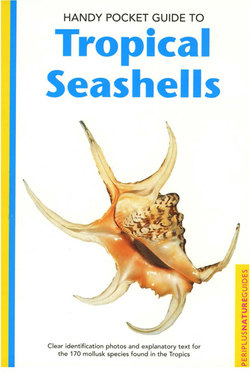Читать книгу Handy Pocket Guide to Tropical Seashells - Pauline Fiene-Severns - Страница 7
На сайте Литреса книга снята с продажи.
ОглавлениеIntroduction
Mollusks are found in a multitude of habitats, from the world's abyssal ocean plains to high in trees from which they never descend. They are sought for food by many animals including man, who considers some mollusks, such as calamari (squid) and oysters, a delicacy. This early cuisine was probably what brought shells to human camps, eventually to be used to create religious artifacts and for ornamentation such as exquisite cameos. Tools were also fashioned from sea shells, including drills made from the aptly-named auger shells, and adzes, fish-hooks and fish lures from various clams. Horns were made to call the people together or to scatter them to hide from an enemy.
Over 60,000 species of mollusks live in the Earth's seas, lakes, rivers and on land. A very diverse group, with equally diverse behaviors, the phylum Mollusca includes the fantastic chameleon-like octopus which mimics other animals and its surroundings; the free-swimming giant squid which lives in the dim twilight zone in deep ocean and is pursued by the equally giant sperm whale; bottom-burrowing clams, snails, slugs and the multi-hued nudibranchs, whose chemical defenses are now being studied for their medicinal properties.
Some mollusks defend themselves against foraging or curious humans by firing a venomous barb which is normally used to stun their fish prey. The toxin from a gland behind the barb of a fish-eating cone shell is injected at the same time the barb is pushed into its target and can occasionally be strong enough to kill a human. Mollusks can be grazers (such as the strombs and highly polished cowries), scavengers milling about looking for dead animals or ferocious predators. It is not hard to imagine how mollusks could have evolved so many specializations, since they have been around for over 500 million years.
The shells of most mollusk species are well known, but there is surprisingly little data on the behavior of some of these species. Behavioral observations may be far more valuable than collecting the shell when attempting to understand how these animals live. When shell collecting, the shell is taken and the animal thrown away. With the rising tide of human population, it is time to abandon the old idea of shell collecting for a more passive method of appreciating seashells by observation. If you must handle the shell, gently place it back where you found it to be sure it has a chance to survive.
Southeast Asia has an abundance of marine shells with the largest number of species in the world. Along the shores of seemingly countless islands and the coast of the Asian mainland it is not unusual to see spectacular and rare shells simply lying on the beaches. This book has been created to give beach-goers, snorkelers and divers a brief introduction to the sometimes fascinating shells they may find and a quick reference to those families of shells most often encountered. The entries are arranged in conventional taxonomic order.
